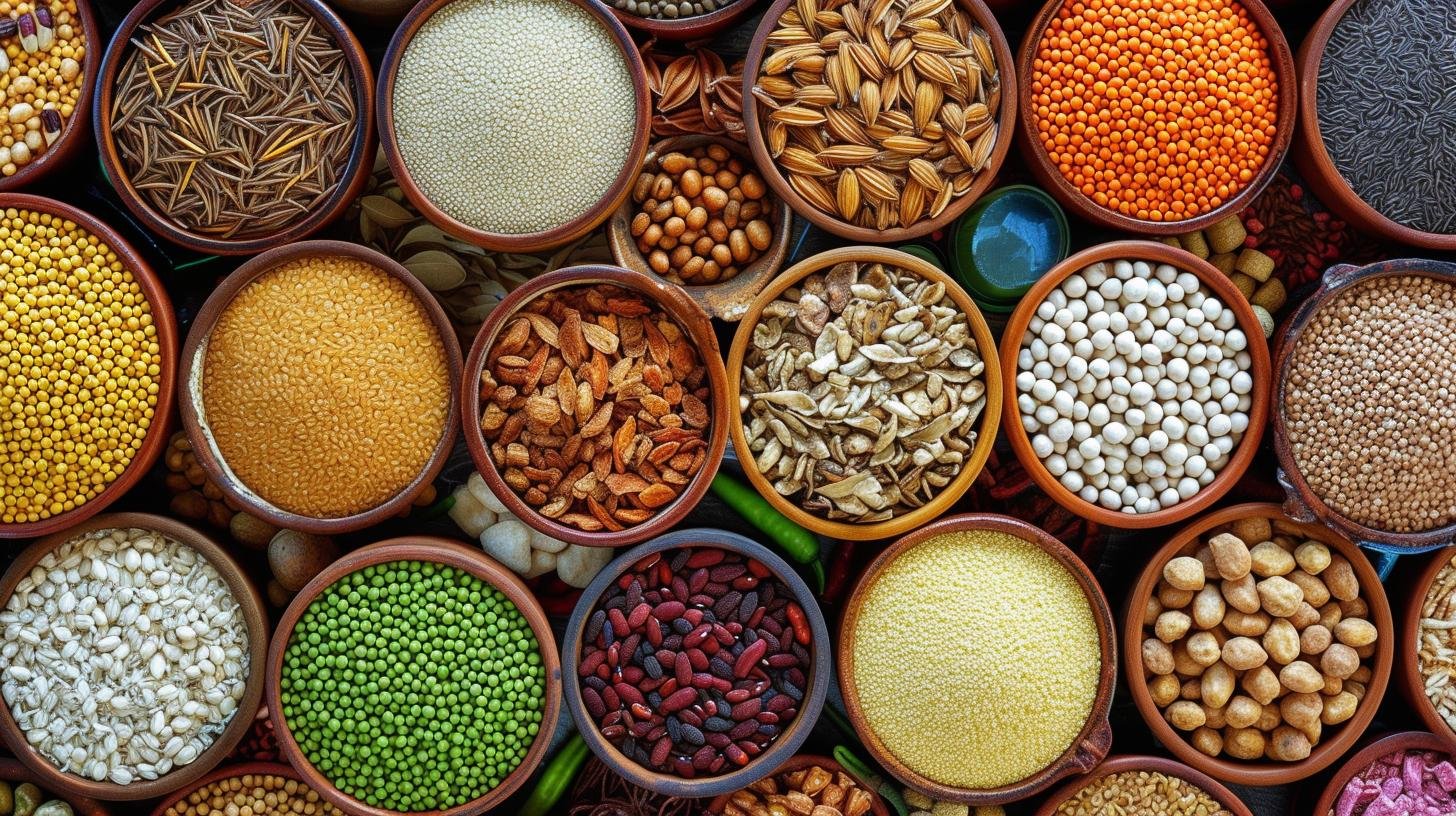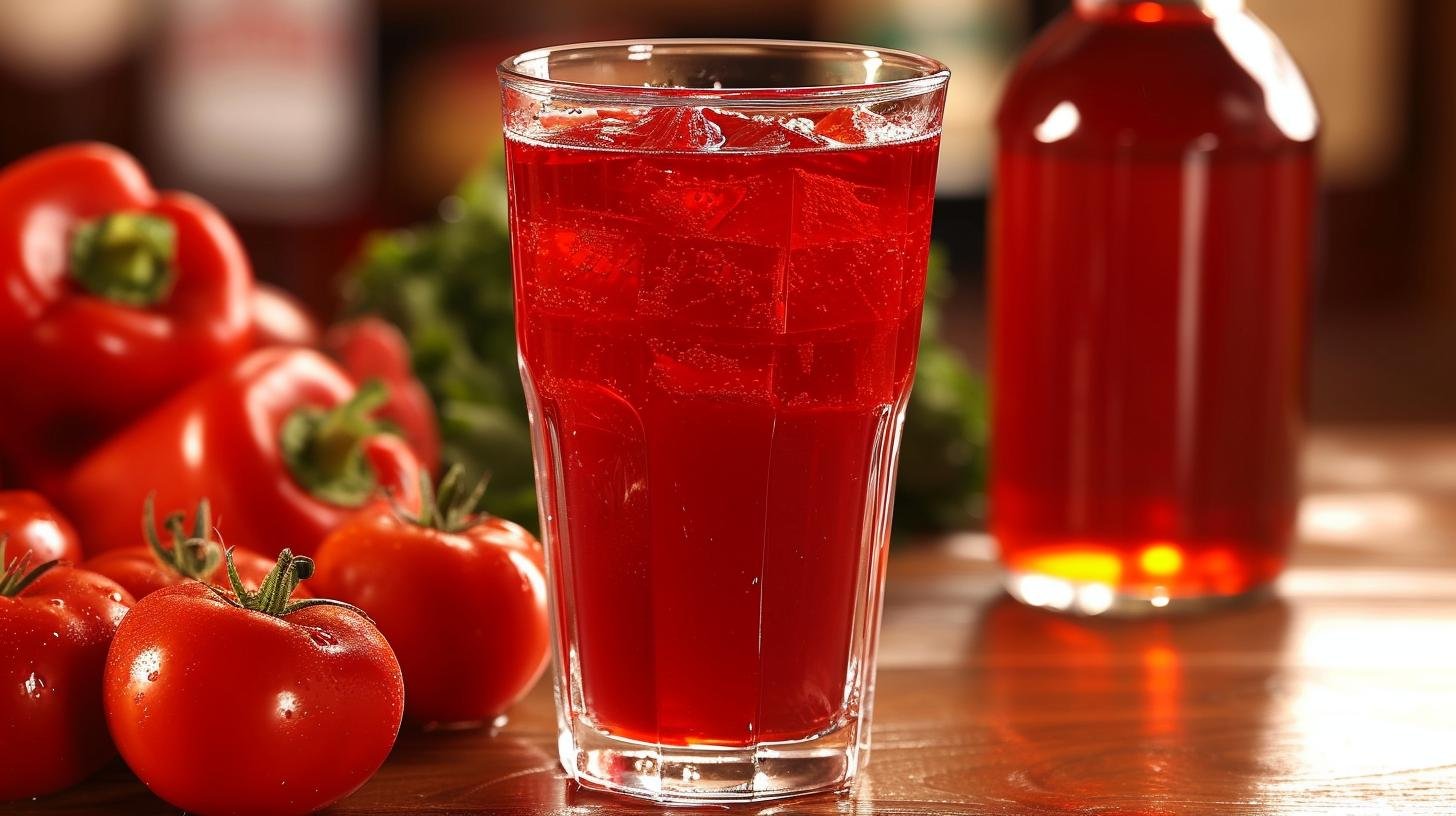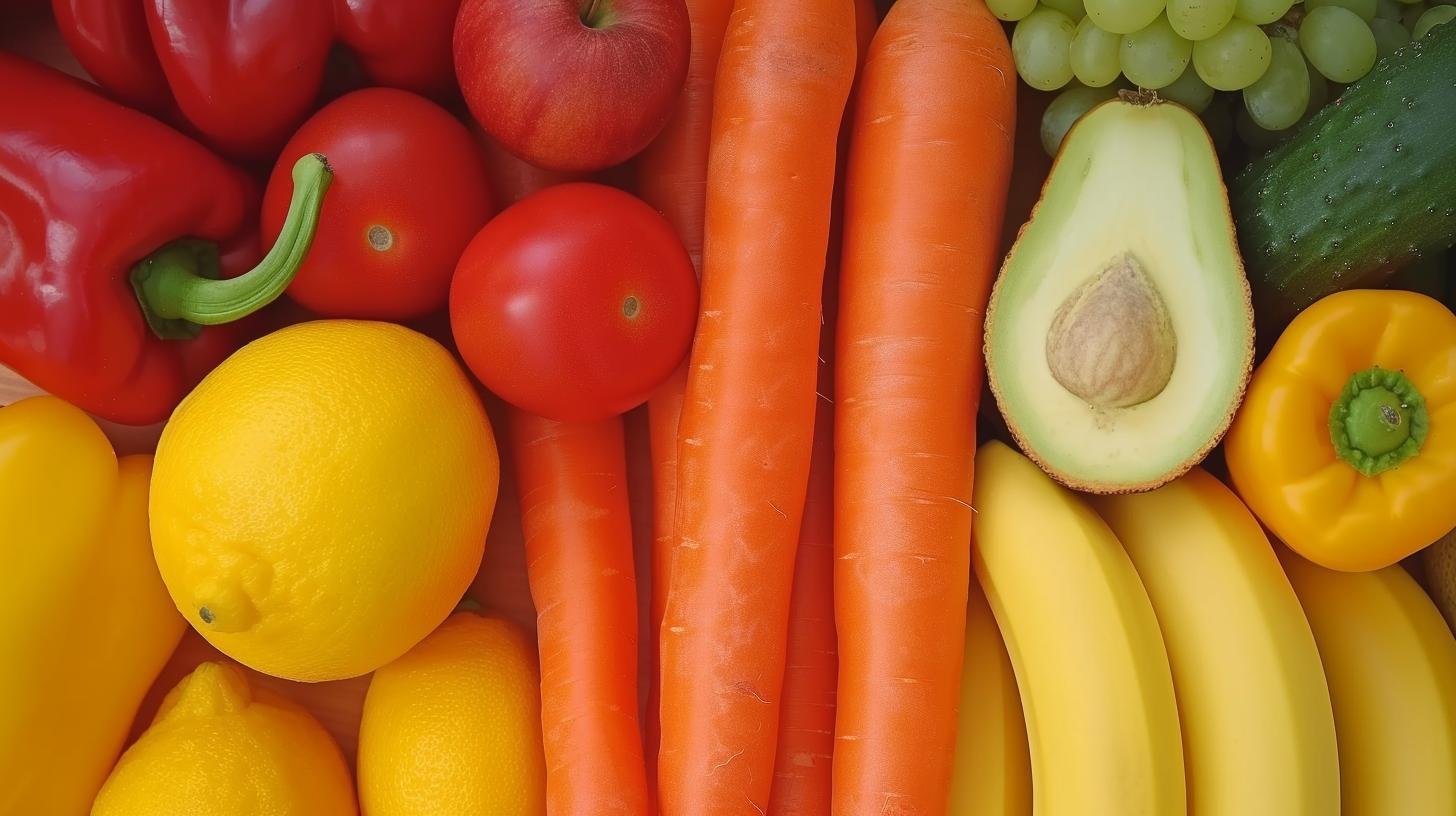Are you looking for ways to naturally increase your hemoglobin levels? In this article, we will explore traditional Tamil foods and techniques that can help boost hemoglobin. Hemoglobin plays a crucial role in our body by carrying oxygen from the lungs to the tissues and returning carbon dioxide to the lungs. Understanding hemoglobin levels and factors affecting it is essential for maintaining overall health and well-being.
Hemoglobin levels can be influenced by various factors such as diet, lifestyle, and underlying health conditions. In the Tamil culture, there are numerous foods and ingredients known for their ability to increase hemoglobin levels. These traditional Tamil foods are rich in nutrients and have been used for generations to support overall health and well-being.
Incorporating nutritious vegetables and fruits into your diet is a simple yet effective way to boost hemoglobin levels. Vegetables such as spinach, beetroot, drumstick leaves, and fruits like pomegranate are known for their high iron content, which is essential for maintaining healthy hemoglobin levels. Additionally, protein-rich foods such as lentils, chickpeas, and lean meats can also contribute to increasing hemoglobin.
Tamil herbs and spices have long been used not only for adding flavor to dishes but also for their medicinal properties. Certain herbs and spices such as curry leaves, fenugreek seeds, cumin seeds, and turmeric are believed to aid in enhancing hemoglobin levels. These ingredients can easily be incorporated into daily cooking routines to reap their benefits.
In addition to focusing on specific foods, understanding cooking techniques that retain the nutritional value of these hemoglobin-boosting foods is important. Overcooking or processing these ingredients can lead to a loss of nutrients, so opting for gentle cooking methods like steaming or stir-frying can help preserve their nutritional content. Stay tuned as we delve deeper into traditional Tamil dishes that promote healthy hemoglobin levels.
Understanding Hemoglobin Levels and Factors Affecting It
Hemoglobin is a protein found in red blood cells that carries oxygen throughout the body, making it crucial for overall health and well-being. Understanding hemoglobin levels and the factors that affect it is important for maintaining optimal health.
Factors affecting hemoglobin levels:
1. Nutritional Deficiencies: A lack of iron, vitamin B12, and folate in the diet can lead to decreased hemoglobin levels.
2. Chronic Diseases: Conditions such as kidney disease, cancer, and certain types of anemia can negatively impact hemoglobin levels.
3. Genetic Factors: Some individuals may have inherited conditions that affect their body’s ability to produce or maintain normal hemoglobin levels.
4. Pregnancy: Hemoglobin levels tend to decrease during pregnancy due to increased blood volume and demand for iron.
It is essential to regularly monitor hemoglobin levels through blood tests to ensure that they remain within a healthy range. In cases where hemoglobin levels are low, making dietary and lifestyle changes can help increase them.
To address low hemoglobin levels, incorporating specific foods known to increase hemoglobin in Tamil cuisine can be beneficial:
In addition to dietary changes, adopting healthy lifestyle habits such as regular exercise and adequate sleep can also support hemoglobin increase.
By understanding the factors affecting hemoglobin levels and making necessary adjustments in diet and lifestyle, individuals can effectively maintain optimal hemoglobin levels for overall health and wellness. Regular monitoring of hemoglobin levels along with medical advice when needed is crucial for managing this aspect of one’s health effectively.
Traditional Tamil Foods Known to Increase Hemoglobin
Hemoglobin is an essential protein in the blood that carries oxygen from the lungs to the rest of the body. Adequate levels of hemoglobin are crucial for overall health and wellbeing. In Tamil culture, various traditional foods are known for their ability to increase hemoglobin levels naturally.
In Tamil cuisine, there are several foods that are recognized for their hemoglobin-boosting properties. One such food is “siru keerai” or small greens, which include varieties like spinach, amaranth leaves, and fenugreek leaves. These greens are rich in iron, folate, and vitamin C, all of which contribute to increased hemoglobin levels.
Another staple in Tamil Nadu known for its ability to boost hemoglobin is “kambu” or pearl millet. This gluten-free grain is a good source of iron and can be consumed in various forms such as porridge, dosa, or as a rice substitute.
Additionally, “nellikai” or Indian gooseberry is a commonly used fruit in Tamil cuisine that is packed with vitamin C. This powerful antioxidant enhances iron absorption in the body and thus helps in raising hemoglobin levels.
Some other traditional Tamil foods known for their hemoglobin-boosting properties include black-eyed peas, jaggery (unrefined sugar), sesame seeds, and drumstick leaves. Incorporating these ingredients into daily meals can help support healthy hemoglobin levels.

Lastly, it’s important to note that along with consuming these traditional hemoglobin-boosting foods, it’s also essential to maintain a well-balanced diet that includes a variety of nutrients essential for overall health.
| Traditional Hemoglobin-Boosting Foods | Nutritional Benefits |
|---|---|
| Siru Keerai (Small Greens) | Rich in iron, folate, and vitamin C |
| Kambu (Pearl Millet) | Good source of iron |
| Nellikai (Indian Gooseberry) | Packed with vitamin C; enhances iron absorption |
| Jaggery (Unrefined Sugar) | Provides natural sweetness; contains iron |
Nutritious Vegetables and Fruits for Boosting Hemoglobin
Benefits of Vegetables and Fruits for Hemoglobin Increase
Vegetables and fruits are known to be rich sources of essential vitamins and minerals that can help boost hemoglobin levels. They are also high in fiber, which aids in digestion and nutrient absorption, promoting overall health. Incorporating a variety of colorful vegetables and fruits into your diet can contribute to a well-rounded approach to increasing hemoglobin.
Best Vegetables for Hemoglobin Increase
Some of the best vegetables known to increase hemoglobin levels include spinach, kale, broccoli, beetroot, carrots, and potatoes. These vegetables are rich in iron, folate, vitamin C, and other essential nutrients that support the production of healthy red blood cells.
Top Fruits for Boosting Hemoglobin
Fruits such as apples, pomegranates, bananas, oranges, strawberries, and watermelon are excellent choices for those looking to increase their hemoglobin levels. These fruits are packed with iron, vitamins, antioxidants, and natural sugars that provide an energy boost while supporting the body’s blood-building processes.
Incorporating Vegetables and Fruits Into Your Diet
There are various ways to incorporate these nutritious vegetables and fruits into your daily meals. You can add them to salads, smoothies, stir-fries, soups, or simply enjoy them as snacks throughout the day. Consuming a diverse range of colorful produce ensures that you get a wide array of nutrients that support hemoglobin increase.
Traditional Tamil Vegetables and Fruits for Hemoglobin Enhancement
In Tamil cuisine, certain vegetables and fruits have been traditionally used to promote healthy blood levels. Some popular choices include drumstick leaves (murungai keerai), gooseberries (nellikai), guavas (koyya palam), plantains (vazhaikai), and mangoes (mangai). Including these traditional ingredients in your diet can be beneficial for those seeking to increase their hemoglobin levels using local produce.
By including a variety of these nutritious vegetables and fruits in your diet on a regular basis and following a balanced meal plan, individuals can effectively work towards boosting their hemoglobin levels naturally.
Protein-Rich Foods for Hemoglobin Increase
When it comes to boosting hemoglobin levels, incorporating protein-rich foods into your diet can be incredibly beneficial. Protein is essential for the production and maintenance of red blood cells, which are responsible for carrying oxygen throughout the body. In addition to iron, protein also plays a key role in supporting healthy hemoglobin levels.
Lean meats such as chicken, turkey, and fish are excellent sources of high-quality protein. These animal-based proteins provide essential amino acids that are crucial for the synthesis of hemoglobin. Including these lean meats in your diet can help support your body’s ability to maintain adequate hemoglobin levels.
For those following a vegetarian or vegan diet, there are plenty of plant-based sources of protein that can aid in increasing hemoglobin. Legumes such as lentils, chickpeas, and black beans are rich in both protein and iron, making them an ideal choice for individuals looking to boost their hemoglobin levels naturally. Additionally, tofu and tempeh are great meat alternatives that offer a substantial amount of protein.
Dairy Products
Dairy products like milk, yogurt, and cheese also contain high-quality proteins that can contribute to the enhancement of hemoglobin levels. These foods are also packed with other essential nutrients such as calcium and vitamin D, which play a role in overall health and well-being.
Eggs
Eggs are another fantastic source of protein that can aid in increasing hemoglobin levels. They provide a complete source of all essential amino acids, making them an ideal addition to any diet focused on improving hemoglobin.

Incorporating these protein-rich foods into your meals can have a significant impact on your body’s ability to maintain healthy hemoglobin levels. Whether you choose animal-based or plant-based sources of protein, ensuring that you consume an adequate amount of this nutrient is key to supporting overall health and well-being.
By including a variety of these protein-rich foods in your daily diet and meal plans, you can effectively work towards naturally boosting your hemoglobin levels while enjoying delicious and nutritious Tamil cuisine.
Tamil Herbs and Spices for Hemoglobin Enhancement
Tamil cuisine is known for its rich use of herbs and spices, many of which have been traditionally used to enhance hemoglobin levels in the body. These natural ingredients not only add flavor to dishes but also provide a range of health benefits, including boosting hemoglobin.
One such herb commonly used in Tamil cuisine for increasing hemoglobin is ‘Sirukeerai’ or tropical amaranth. This leafy green vegetable is packed with iron, folate, and other essential nutrients that are crucial for the production of healthy red blood cells. Including dishes made with Sirukeerai in your diet can significantly contribute to raising your hemoglobin levels.
Another popular ingredient used in Tamil cooking for its hemoglobin-boosting properties is ‘Manathakkali’ or black nightshade. Known for its high iron content, Manathakkali is often included in gravies, stir-fries, and soups to help combat anemia and improve overall blood health.
Additionally, ginger and garlic are two widely used spices in Tamil cuisine that are believed to aid in increasing hemoglobin levels. Both ginger and garlic contain compounds that can stimulate the production of red blood cells and improve blood circulation, thus supporting the enhancement of hemoglobin in the body.
Furthermore, turmeric, commonly referred to as ‘Manjal’ in Tamil, is an essential spice known for its anti-inflammatory and antioxidant properties. The curcumin compound found in turmeric has been linked to improving hemoglobin levels by supporting the body’s ability to absorb iron from food sources. Incorporating turmeric into various dishes can be beneficial for individuals looking to raise their hemoglobin levels through their diet.
Cooking Techniques for Retaining Nutritional Value of Hemoglobin-Boosting Foods
When it comes to retaining the nutritional value of hemoglobin-boosting foods, it’s important to utilize cooking techniques that maintain the integrity of the nutrients. Here are some tips and techniques for preserving the nutritional content of traditional Tamil foods known to increase hemoglobin:
1. Steaming: Steaming is a gentle cooking method that helps retain the nutrients in vegetables such as spinach, kale, and broccoli. When these vegetables are steamed, they retain more vitamins and minerals compared to boiling or frying.
2. Stir-frying: Stir-frying is a popular cooking technique in Tamil cuisine that allows for quick cooking at high heat. This method helps preserve the color, texture, and nutrients of vegetables like bell peppers, carrots, and green beans.
3. Minimized Water Usage: When preparing hemoglobin-boosting foods such as lentils and chickpeas, it’s important to minimize water usage during cooking. Excess water can lead to loss of water-soluble vitamins and minerals.
4. Raw Consumption: Some fruits and vegetables like pomegranates and carrots are best consumed raw to ensure maximum intake of their nutrients. Including these raw foods in salads or juices can be an effective way to boost hemoglobin levels.
5. Use of Herbs and Spices: Incorporating traditional Tamil herbs and spices such as turmeric, cumin, and curry leaves into dishes not only adds flavor but also enhances the nutritional value of the food due to their medicinal properties.
By employing these cooking techniques, individuals can maximize the nutritional benefits of hemoglobin-boosting Tamil foods in their daily diet.
Additionally, understanding when certain ingredients are at their peak nutrient levels will also help in retaining their health benefits. For example, incorporating fresh produce instead of frozen or canned options ensures higher nutrient content in meals.
Sample Tamil Hemoglobin-Boosting Meal Plan
Consuming a well-balanced diet that includes foods rich in iron, vitamin B12, and folate is essential for increasing hemoglobin levels. Tamil cuisine offers a variety of traditional foods that are known to boost hemoglobin. By incorporating these foods into your daily meal plan, you can naturally improve your hemoglobin levels and support overall health.
A typical Tamil hemoglobin-boosting meal plan may include a combination of rice, lentils, vegetables, fruits, and protein-rich foods. For breakfast, you can start your day with a traditional dish such as idli or dosa made from fermented rice and lentil batter. These dishes are not only delicious but also rich in nutrients like iron and protein, which are essential for hemoglobin production.

For lunch, consider preparing sambar using nutrient-dense vegetables such as drumstick, tomatoes, and shallots. Drumstick leaves are particularly beneficial for increasing hemoglobin due to their high iron content. Pair the sambar with a serving of brown rice or millet for added fiber and essential vitamins.
In the evening, incorporate a nutritious snack such as steamed sundal made from chickpeas or green gram. These legumes are packed with protein and iron, making them ideal for boosting hemoglobin levels. Additionally, munch on fresh fruits like guava or pomegranate, both of which are known for their hemoglobin-boosting properties.
For dinner, opt for a balanced meal consisting of chapati or rice accompanied by dal (lentils) and a side of seasonal vegetables. Spinach and fenugreek leaves are excellent choices as they are rich in iron and folic acid – key nutrients needed for hemoglobin synthesis.
To enhance the nutritional value of these meals, it is important to use cooking techniques that retain the inherent goodness of the ingredients. Steaming, boiling, or sautéing foods lightly will help preserve their nutrients while also making them easier to digest.
By following this sample Tamil hemoglobin-boosting meal plan and incorporating lifestyle changes such as regular exercise and adequate hydration into your routine, you can effectively support an increase in hemoglobin levels. However, it is important to monitor your progress regularly through blood tests and consult with a healthcare professional if you have any concerns about your hemoglobin levels.
Lifestyle Changes to Support Hemoglobin Increase
In addition to incorporating hemoglobin-boosting foods into your diet, making certain lifestyle changes can also support an increase in hemoglobin levels. One important lifestyle change is to engage in regular physical activity. Exercise helps improve blood circulation, which can contribute to the production of healthy red blood cells and ultimately increase hemoglobin levels. Aim for at least 30 minutes of moderate exercise most days of the week, such as brisk walking, swimming, or cycling.
Another lifestyle change that can support hemoglobin increase is managing stress levels. Chronic stress can negatively impact the body’s ability to produce red blood cells, so it’s important to find healthy ways to cope with stress. Engaging in relaxation techniques such as meditation, yoga, or deep breathing exercises can help reduce stress and promote overall well-being.
Getting an adequate amount of sleep is also crucial for supporting hemoglobin increase. During sleep, the body undergoes various repair and restoration processes, including the production of red blood cells. Aim for 7-9 hours of quality sleep each night to support healthy hemoglobin levels.
Additionally, it is essential to avoid harmful habits such as smoking and excessive alcohol consumption as these can negatively impact hemoglobin levels. Smoking reduces the oxygen-carrying capacity of the blood while alcohol can interfere with the body’s ability to absorb essential nutrients necessary for hemoglobin production.
Moreover, staying adequately hydrated is crucial for supporting hemoglobin increase. Dehydration can lead to a decrease in blood volume and thicker blood consistency, making it harder for red blood cells to travel throughout the body. Aim to drink at least 8-10 glasses of water a day and include hydrating foods like cucumbers, watermelon, and oranges in your diet.
By implementing these lifestyle changes along with consuming hemoglobin-boosting foods regularly, individuals can support their efforts in increasing their hemoglobin levels naturally over time. Making these changes not only has the potential to enhance overall health but also contributes significantly in maintaining optimal hemoglobin levels.
Tips for Monitoring Hemoglobin Levels and Seeking Medical Advice
In conclusion, understanding the importance of maintaining healthy hemoglobin levels is crucial for overall well-being. Hemoglobin plays a vital role in carrying oxygen to tissues and organs, making it essential for optimal bodily functions. Factors such as diet, lifestyle, and genetics can affect hemoglobin levels, making it important to pay attention to what we eat and how we live.
The traditional Tamil diet offers a range of foods that are known to naturally increase hemoglobin levels. Including these foods in our daily meals can help provide the necessary nutrients for optimal hemoglobin production. Nutritious vegetables, fruits, protein-rich foods, herbs, and spices commonly used in Tamil cuisine all contribute to boosting hemoglobin levels.
It’s also important to consider cooking techniques when preparing hemoglobin-boosting foods. Cooking methods that retain the nutritional value of these foods ensure that we get the maximum benefit from them. Additionally, making lifestyle changes such as regular exercise and stress management can support hemoglobin increase.
While a balanced diet rich in hemoglobin-boosting foods can be beneficial for overall health, it’s important to monitor hemoglobin levels regularly. Routine check-ups with healthcare professionals can help identify any deficiencies or abnormalities early on. Seeking medical advice if there are persistent symptoms of low hemoglobin is essential for proper diagnosis and treatment.

